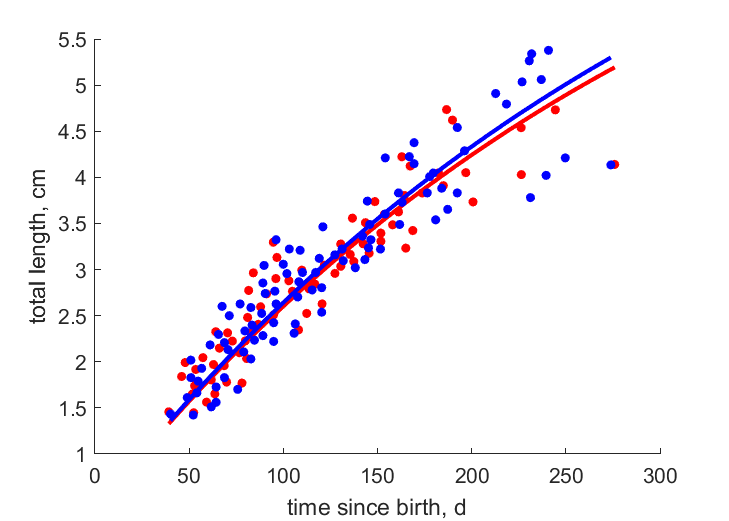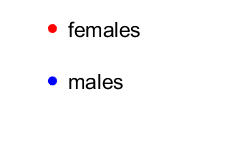Predictions & Data for this entry
| Model: std | climate: MC, MB | migrate: Mo | phylum: |
| COMPLETE = 2.5 | ecozone: MAE, MAm | food: biCi, biPz | class: |
| MRE = 0.045 | habitat: 0jFe, jiMp | gender: D | order: |
| SMSE = 0.006 | embryo: Mc | reprod: O | family: |
Zero-variate data
| Data | Observed | Predicted | (RE) | Unit | Description | Reference |
|---|---|---|---|---|---|---|
| ab | 12 | 11.68 | (0.02638) | d | age at birth | guess |
| am | 365 | 364.9 | (0.0002381) | d | life span | fishbase |
| Lp | 3.8 | 3.853 | (0.01408) | cm | total length at puberty | fishbase |
| Li | 7.9 | 8.159 | (0.03281) | cm | ultimate total length | fishbase |
| Wwb | 0.0002771 | 0.0002809 | (0.01356) | g | wet weight at birth | guess |
| Wwp | 0.3249 | 0.3236 | (0.004) | g | wet weight at puberty | fishbase |
| Wwi | 3.11 | 3.072 | (0.01228) | g | ultimate wet weight | fishbase |
| Ri | 7.255 | 7.259 | (0.0006285) | #/d | maximum reprod rate | fishbase |
Uni- and bivariate data
| Data | Figure | Independent variable | Dependent variable | (RE) | Reference |
|---|---|---|---|---|---|
| tL_f |   | time since birth | total length | (0.08352) | Mesa1999 |
| tL_m |   | time since birth | total length | (0.09395) | Mesa1999 |
Pseudo-data at Tref = 20°C
| Data | Generalised animal | Aphia minuta | Unit | Description |
|---|---|---|---|---|
| v | 0.02 | 0.02069 | cm/d | energy conductance |
| p_M | 18 | 510.5 | J/d.cm^3 | vol-spec som maint |
| k_J | 0.002 | 0.002 | 1/d | maturity maint rate coefficient |
| k | 0.3 | 0.02048 | - | maintenance ratio |
| kap | 0.8 | 0.9259 | - | allocation fraction to soma |
| kap_G | 0.8 | 0.8004 | - | growth efficiency |
| kap_R | 0.95 | 0.95 | - | reproduction efficiency |
Discussion
- males are supposed to differ from females by {p_Am} only
Facts
- length-weight: weight in g = 0.00525*(TL in cm)^3.09 (Ref: fishbase)
Bibliography